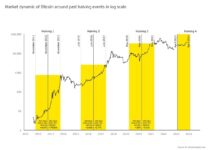Markets steady as rate-cut expectations lift risk assets
Bitcoin (BTC) held near the mid-$80,000s in early Asia trading as markets priced a higher probability of a Federal Reserve rate cut later in 2025. Ethereum (ETH) tracked the rebound, recovering part of last week’s pullback as traders recalibrated positions amid a quieter risk backdrop.

Macro developments remain the primary driver. As inflation indicators and labor-market data have softened through 2025, futures-implied rates and probability markets increasingly point to easing later in the year. That shift has helped reduce immediate selling pressure across crypto markets, allowing prices to consolidate after recent volatility.
Price action: BTC and ETH
Key levels in the early Asia session:
- BTC: trading around $88,000 after dipping toward the low $80,000s earlier in the week.
- ETH: hovering near $2,900–$3,000, recovering from a short-term pullback.
- Gold: lifted as rate-cut expectations gain traction, drawing safe-haven demand.
- Regional equities: Asia-Pacific benchmarks opened higher, reflecting improved risk appetite.
The immediate technical picture shows a consolidation phase rather than a fresh trend breakout. Market participants appear to be reestablishing positions, with renewed interest on both the long and short sides depending on upcoming U.S. data releases.
Options and futures positioning
Options desks and derivatives traders report a notable skew in year-end positioning: open interest for call options at several out-of-the-money strikes outpaces put activity in some intervals. That suggests a growing hedge for upside exposure alongside continued downside protection.
At the same time, perpetual-futures funding rates have turned negative across major venues. Negative funding typically signals that long leverage is being reduced as market participants unwind highly leveraged positions. The result is a lower short-term probability of forced long-liquidation cascades, which in turn moderates acute volatility even while overall implied volatility remains elevated.
On-chain signals point to a structural reset
Multiple on-chain indicators and derivatives metrics together paint a picture of a market undergoing a structural reset rather than an abrupt, disorderly selloff. Key observations from analytics tools include:
- Rising supply held by short-term holders, an indicator often associated with late-stage correction dynamics.
- Negative cumulative volume delta in perpetual futures, reflecting that aggressive selling in futures markets contributed materially to recent price pressure.
- Reduced long leverage as funding rates went negative, which decreases the chance of another sharp cascade caused by forced deleveraging.
Taken together, these signals align with a scenario where recent drawdowns were driven more by controlled unwind mechanics than by panic selling. That distinction matters for how quickly markets might reestablish higher lows and for the durability of any recovery into year-end.
Why December 2025 matters for crypto
The market’s focus on a potential December 2025 Fed rate cut is grounded in how monetary policy influences risk assets. For crypto markets specifically, lower policy rates can ease carry costs, encourage risk-taking, and support higher valuations for growth-oriented assets.
Institutional participation—already elevated following spot ETF approvals and broader adoption in previous years—adds another channel through which rate expectations can transmit to crypto prices. In a softer-rate environment, large allocators may increase exposure to digital assets as part of diversified portfolios, reinforcing positive price feedback loops.
Data dependency and upcoming catalysts
Despite growing optimism, the path forward remains data-dependent. Key U.S. data points that could validate or challenge the rate-cut narrative include:
- Inflation prints (CPI and PCE) and their core measures.
- Employment reports, particularly nonfarm payrolls and wage-growth metrics.
- Fed officials’ communications and any revisions to forward guidance.
Markets will be sensitive to any surprises in these releases. A stronger-than-expected inflation outturn or hawkish commentary could quickly push implied rate-cut probabilities lower, prompting renewed volatility.
Regional market response in Asia
Asian equity indices opened higher in response to improved risk sentiment, with major benchmarks showing modest gains as investors priced the changing rate outlook. The positive tone in equities can be reinforcing for crypto during early trading hours in the region, as global liquidity conditions and sentiment often move in tandem.
Additionally, safe-haven assets like gold have appreciated alongside risk assets, reflecting mixed positioning where investors hedge macro uncertainty while participating in potential upside opportunities.
Market structure: leverage, liquidity and the path to a bottom
Analysts point to several structural features that appear to be shaping the market’s current behavior:
- Leverage reset: the purge of excessive long leverage has left the market less vulnerable to cascading liquidations.
- Hedging behavior: the co-existence of downside protection (puts) and greater call open interest suggests market participants are positioning for asymmetric outcomes into year-end.
- Consolidation range: prices stabilizing within a range after sharp moves often precede the formation of a new market structure—either a base for recovery or a setup for another leg down if macro conditions deteriorate.
These dynamics imply a cautious optimism: while volatility can and likely will remain, the mechanics that fueled the most acute phase of selling have softened, lowering tail risks in the near term.
Implications for traders and investors
Given the current backdrop, market participants may consider the following tactical and strategic considerations:
- Risk management: maintain disciplined position sizing and use derivatives to hedge asymmetric risks, especially ahead of key macro releases.
- Monitor funding and open-interest metrics: changes in these indicators can preempt sudden volatility events driven by leverage dynamics.
- Watch liquidity corridors: support and resistance levels remain relevant—traders should map these alongside options open interest to understand likely absorption points for flows.
- Long-term allocation: investors with longer horizons should assess whether current drawdowns present rebalancing opportunities, taking into account base-case scenarios for 2025 monetary policy and regulatory developments.
Looking ahead into 2025
As 2025 progresses, several themes are likely to shape crypto market outcomes:
- Monetary policy trajectory: whether the Fed moves to cut rates, and the timing of any cuts, will influence liquidity and risk appetite globally.
- Institutional engagement: continued participation from institutional investors, including private funds and corporate treasuries, can provide structural support if inflows persist.
- On-chain fundamentals: metrics such as active addresses, transfer volumes, and staking flows will offer ongoing signals about adoption and network utility.
- Regulatory clarity: evolving regulatory frameworks across major jurisdictions will impact market access and product innovation.
Market participants should remain flexible. A policy-driven improvement in liquidity could foster a steadier ascent, but surprises—either macroeconomic or regulatory—can rapidly change the landscape.
Conclusion
Early trading in Asia reflected a market that has steadied as Fed rate-cut odds rose. Bitcoin and Ethereum recovered from recent lows, while funding rates and on-chain indicators suggest that much of the most dangerous leverage has been unwound. Traders are positioning for both downside protection and potential upside into year-end, creating a mixed but calmer environment than the volatile stretch that preceded this consolidation.
Ultimately, the market’s next meaningful direction will likely be determined by incoming U.S. economic data and Fed guidance. For now, the confluence of reduced leverage, balanced hedging, and improving risk sentiment points to a cautiously constructive setup for crypto markets as 2025 unfolds.
Disclaimer: This post is a compilation of publicly available information.
MEXC does not verify or guarantee the accuracy of third-party content.
Readers should conduct their own research before making any investment or participation decisions.
Join MEXC and Get up to $10,000 Bonus!
Sign Up


